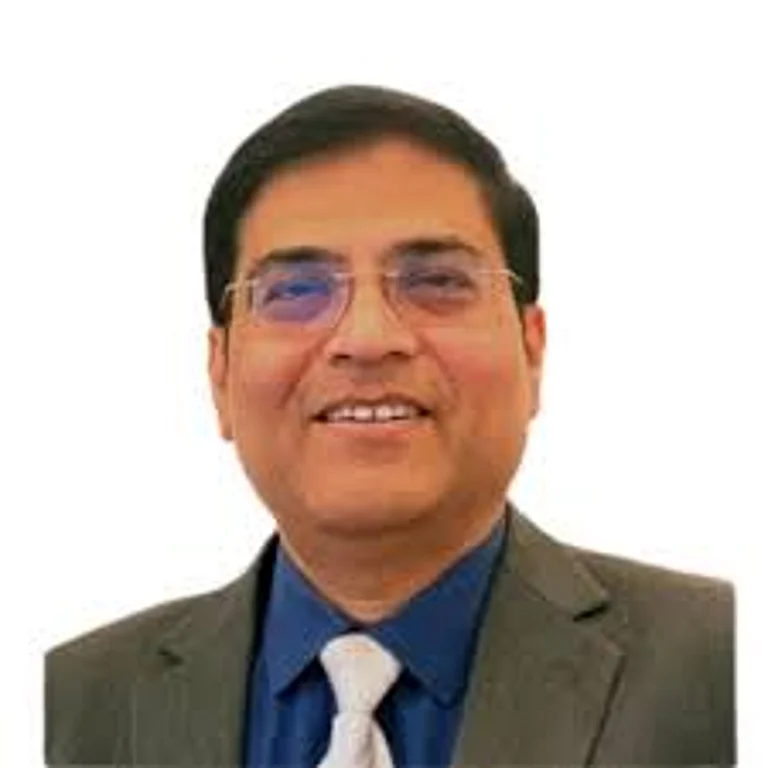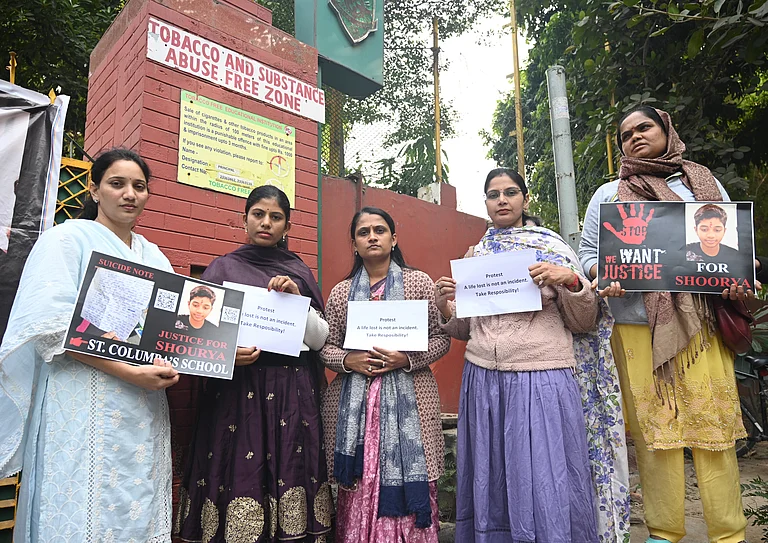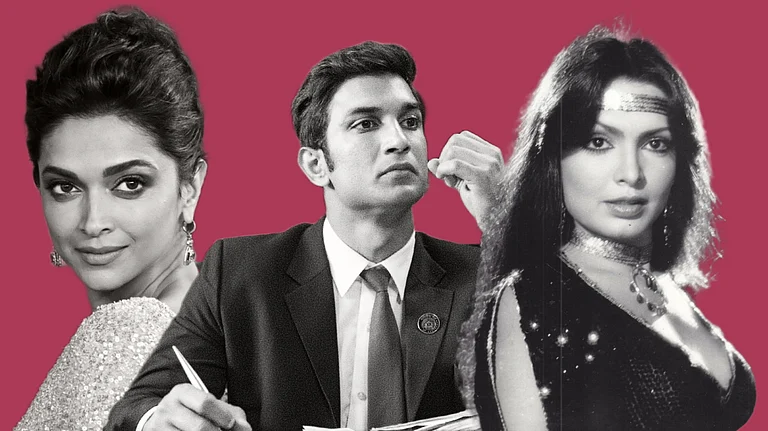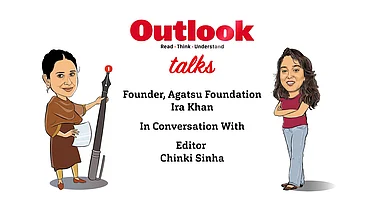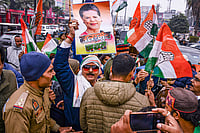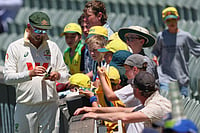Warning: This article includes a suicide note and has detailed accounts of the psychological impact of reporting on conflict and suffering

Pulitzer-winning photojournalist Kevin Carter died by suicide in 1994.
He was awarded for child's photo taken in famine-struck Sudan.
Conflict journalism takes terrible toll on reporters who cover the issue.
I’m really, really sorry. The pain of life overrides the joy to the point that joy does not exist. …depressed … without phone … money for rent … money for child support … money for debts … money!!! … I am haunted by the vivid memories of killings and corpses and anger and pain … of starving—or wounded children, of trigger-happy madmen, often police, of killer executioners … I have gone to join Ken if I am that lucky.
— Kevin Carter
This was how the suicide note of Pulitzer Prize-winning photojournalist Kevin Carter read. Carter died by suicide in 1994, less than four months after receiving the award for his photograph of a famine-stricken child in Sudan. The iconic picture captured a young child, famished and weak, almost unable to walk and stalked by a vulture.
The photographer and his work became both famous and controversial. Carter was called out for not helping the child. He maintained that he had chased away the vulture and that the child had resumed her trek to the aid centre nearby. Still, it seems there was something he was unable to live with.
Carter’s death is an extreme case; maybe many would not be able to relate. But it is surely a cry for attention to the psychological toll—bearing witness to death, suffering, and even hopelessness—takes on conflict journalists.
I keep thinking what Carter’s dilemma could have been; maybe it was the guilt of not doing enough for the child while dealing with the trauma of his experiences. That may be a dilemma for many of us who have covered conflicts and experienced its aftereffects. A sense of helplessness, coupled with the guilt that chronicling human suffering is your means to earn a living.
Or the guilt when you see a mother wailing next to a bullet-ridden body of her child, but you don’t want to meet her eyes. You don’t want that look from her, which makes you feel guilty of selling her pain. You know, you are just an observer in the crowd of mourners. Your empathy is not genuine; it’s borrowed and momentary; you didn’t know the deceased. You are here because you have a story to file.
Friends in Kashmir would tell me that conflict reporters have significantly more psychological difficulties than journalists who don’t cover ‘war stories’. At that point in time, I disagreed. I was a health reporter living in Delhi, reporting from the rest of India. Things couldn’t be worse than what I had seen. The organisation, where I used to work, would send me to places that were the back of beyond, where you felt guilty if anyone offered you a cup of tea, thinking this could be their only meal.
I had seen a rape victim—as young as five years—whose private parts were torn by bottles and candles that the rapists had inserted inside her. I had seen a 10-year-old boy’s eyes being gouged out because a neighbour felt his family had moved the barriers of their fields a few inches after the monsoon rains.
I had seen children orphaned by HIV/AIDS; I had seen poverty-stricken people fighting deadly diseases. I had seen people live in subhuman conditions—a field trip to a village to report about a large number of paediatric encephalitis deaths had left me with months of fungal infection in my feet. No matter how crude the words might sound, I had seen places where there was little difference in how humans and animals lived.
I had been involved in all these stories, and in one way or the other, they remained a part of me. So shifting back to Kashmir as chief of bureau of one of the largest circulating dailies at the end of 2009 was not much of a psychological task.
As a Delhi-based reporter, I had covered stories from Kashmir every time I visited home, even for a holiday. A two-page story on a widow’s village and some stories on the mental health of women and children after more than a decade of conflict.
And Kashmir was changing now, I thought. A new young chief minister spelled hope. The city of Srinagar was also changing. Sounds of the jackboots and gunshots were not the only sounds of the night; you could see more people carrying kangris under their phirans than guns.
Some security forces were back in the barracks, and the remaining bunkers had fewer concertina wires. The concertina wires that defined our childhood, sprouting out of nowhere, made walking a tough task. You had to save yourself from getting entangled, getting hurt, and sometimes even getting killed.
Unfortunately, the change did not last.
The year I arrived was marred by the killing of a 17-year-old girl and her 22-year-old sister-in-law. While investigations by the government claimed both had died due to drowning, people in the area said it was a double rape and murder.
The next year was the beginning of what was later called the series of Kashmir Summer street protests. It began with an encounter of three people in 2010, who the army claimed they were Pakistani infiltrators; and later, it was revealed they were locals from a village in north Kashmir.
The incident sparked outrage and protestors—predominantly youth—hit the streets pelting stones at the security forces. The riot police tried to manage the protests with teargas shells, rubber bullets, and live ammunition. Scores were killed, including a 12-year-old on the way to his tuition class.
Meeting the family of this pre-teen, who were still holding on to his blood-soaked school uniform, was my first reality check. Sitting across from his father, a once high-profile carpet businessman in his plush three-storied house in old city Srinagar, I realised this would be the story that would refuse to be just a story.
The couple in their early 40s had lost their only son; there were more questions in their eyes for me than I had for them. I felt the mother expected more from me since I was a mother myself, and more from me as a part of the story since it was my city; I spoke their language and shared their sensitivities.
I am one of those journalists who cry while writing a story.
I cried during one of my first assignments as a field reporter in Delhi when I visited the houses of the 1984 Sikh riot victims in the aftermath of the September 11 attacks in the US. For the first time, the Sikh community was again forced to hide their identity, akin to the time of the riots. I cried when I saw the photographs of new brides who had become wrinkled, older women. They showed me the roofs that still showed signs of repair when the rioters had entered the houses.
But it was nothing like meeting the mother of this 12-year-old in Kashmir. I felt the burden of her expectations. She expected me to identify with her pain, own it like it was mine. She expected me to be part of her struggle for justice. I couldn’t tell her I was just a messenger. I could carry forward her message and do nothing more.
I panic when loved ones back home don’t answer even when you make two consecutive calls.
I could see the same expectations in the eyes of women whose sons or husbands had mysteriously disappeared for years. The almost-starving children, who didn’t know whether they were orphans or not, the women who had no means of survival but were struggling to keep the tag of widowhood away, and continuing their search for their beloved.
I knew the story didn’t end after I filed it; I had to find a means to help and rehabilitate them. Like other stories, they would not just be part of my past; I would see them on the 10th of every month, sitting in a park in Srinagar’s business centre, Lal Chowk, holding placards and worn-out pictures of their loved ones and seeking closure.
Every day in Kashmir was violence, every day was a story of killings and every day was a story of destruction—encounters, ambushes, attacks, improvised explosive devices (IEDs), grenades and vehicle blasts. Bodies and body bags. Rasm-e-Chaharum at graveyards, wreath-laying functions at security establishments. Crying eyes, wailing hearts.
However, it wasn’t till 2016 that I realised what each day of reporting about blood-drenched streets, maimed bodies and shattered families was doing to my wellbeing.
I had heard that conflict reporters have significantly more psychiatric difficulties than journalists who do not report on war. A research paper revealed that the lifetime prevalence of Post-Traumatic Stress Disorder (PTSD) among conflict journalists is similar to those of war veterans or soldiers. The paper also said the rate of major depression exceeds that of the general population.
Covering conflict is dangerous, but it becomes even more hazardous when the conflict zone happens to be your motherland. As digital media redefined real-time news for print organisations, and editors wanted you to beat television to it, 2016 meant more struggles about getting the numbers right before everyone else.
“TV is saying 10 were killed, our story is saying nine,” was not a call you would look forward to. So, screaming across the newsroom to know the “toll of the day” became the norm. “Give me the number,” I would hear myself scream, till I realised the numbers I was obsessing about were human beings.
They were young men killed every day—sons, brothers, and sometimes husbands and fathers. They left behind stories; they left behind sagas.
I remember the day my photojournalist colleague came running, saying that the 13-year-old boy whose home we had visited after he left to become a ‘child soldier’—when recruited by a militant organisation—had died.
It was the last nail in the coffin. That day, I broke down, remembering his unfinished homework and how he had taken his tennis ball and bat with him. He had died two years after his recruitment; he was 15. Many might argue why one should cry over someone who chose violence as an option?
I cried over how he had become a victim of mindless madness, which has claimed thousands of lives in my homeland, which was once a land of sufis and rishis.
I broke down because I had also lost an unborn child in the unrest. My unborn child was lost to treacherous bike rides through the broken roads, taken to avoid both security men and stone pelters. I would leave home before dawn every morning and return only after dark.
The horrors of conflict showed up with insomnia as the first sign. I started juggling between the coverage of the conflict and insomnia. The effects were visible on the walls. I would see red spots on the walls whenever I opened my eyes.
I would imagine that each time I saw the spots—which were as clear as polka dots printed on a piece of cloth—I thought they were created by some barrier in the night lamp. But the dots were there on all sides, and all looked the same. It seemed like blood spilled on the walls—was it of the youth falling every day, or was it my unborn child? I had to seek help, and I did. I think I just needed to sleep. I had to rest the grief out of me.
I left the place of trauma when my children’s school became an encounter site. But the trauma never left me. The trauma stays on even when you leave the conflict zone.
Writing for Equal Times, a freelance journalist from Lebanon, Ethel Bonet described how “the irritating sounds of drones resonate in her head, even after they stopped flying over the building”.
Bonet said that any loud noise would disturb her concentration while sitting at the computer. “I would stop writing and compulsively check the social media platform X, looking for Arabic messages from the spokesperson of the Israel Defense Forces (IDF), Avichay Adraee, fearing I might find an urgent evacuation warning for the inhabitants of Beirut’s suburbs. When there was no news, I would breathe a sigh of relief, convincing myself that maybe it was just a sonic boom caused by the Israeli fighter jets crossing at low altitude,” she wrote.
While it’s still difficult to understand the trauma Carter was carrying inside him, Bonet’s is relatable.
Any loud sound that sounds like a bomb still startles me. I react differently to that first firecracker on Diwali than the rest of the people around me. I must remind myself that it’s the wedding season, not the sound of firing every time the sky bursts with multiple blasts.
I panic when loved ones back home don’t answer even when you make two consecutive calls.
The trauma and memories come back, flowing every time, when innocents are killed back home. Those images envelop my mind when I want to avoid visiting demolished homes and encounter sites during the recent Pahalgam attack, which left scores of tourists dead in Kashmir.
It shows up every time I see videos of war and violence.
The trauma takes different forms and shapes. These days it has taken the shape of the starving and dying men, women, and children of Palestine.
MORE FROM THIS ISSUE
Toufiq Rashid is Deputy Managing Editor, Digital, Outlook.
In its August 21 issue, Everyday I Pray for Love, Outlook collaborated with The Banyan India to take a hard look at the community and care provided to those with mental health disorders in India. From the inmates in mental health facilities across India—Ranchi to Lucknow—to the mental health impact of conflict journalism, to the chronic stress caused by the caste system, our reporters and columnists shed light on and questioned the stigma weighing down the vulnerable communities where mental health disorders are prevalent. This copy appeared in print as 'I Am One Of Those Journalists Who Cry While Writing A Story.'










